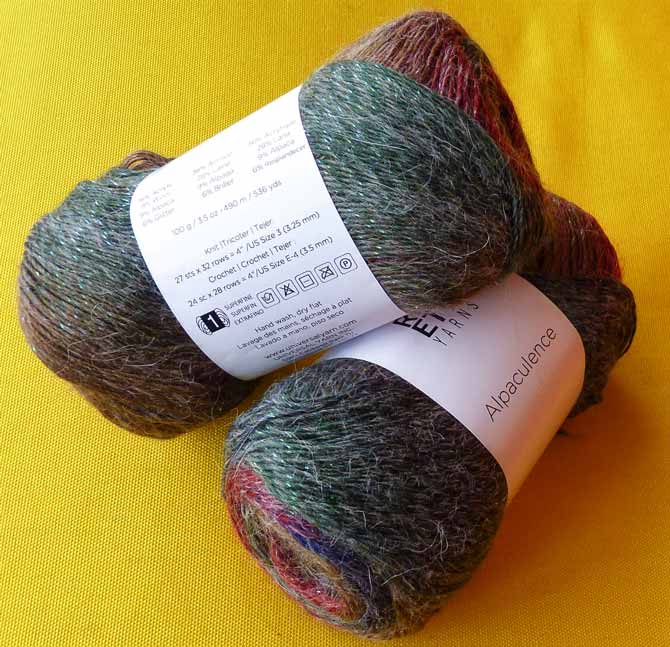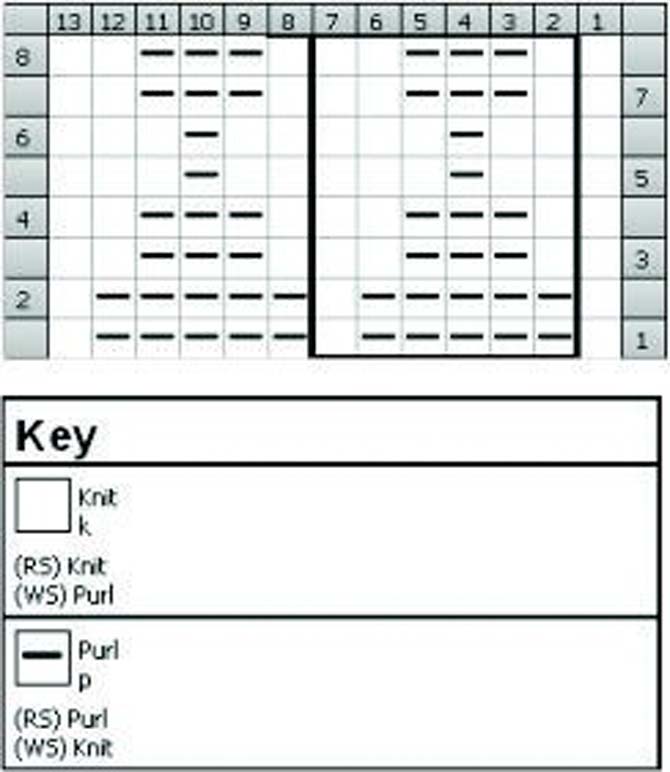This week we’re reviewing Alpaculence, a singles yarn made by Rozetti Yarns.

The agate colorway of Alpaculence yarn, showing the “stats” side of the ball band.
Monday we learned that the yarn I’m sampling this week is in “pre-production mode,” and yesterday we learned that my stockinette stitch sample skewed from a square into a parallelogram. That led to a discussion about balance in yarn, and I promised that today, I would give you some strategies for what to do when your knitting takes off on a tangent.

Cynthia’s swatch took a rather hard right!
The first thing you can try, if you’re able, is to try another swatch with a different yarn hold. I’m a “thrower” which means I knit “Victorian style”, carrying the yarn in my right hand and flicking it around the tip of the right needle with my right index finger.
Sometimes, a Continental knitting hold, where you hold the yarn in the left hand and “pick” the yarn with the tip of the right needle can actually reduce or resolve a slanted knitting situation.
To prove this theory, I knitted two tubular samples from Alpaculence. The blue one in the photo below was made by “throwing” my yarn. Its stitches slant at 78°. By switching to Continental hold, I was able to make the stitches straighten up a little — to about 83°.

The top sample was knit by “throwing” and the bottom one by “picking”/ Continental style. While the stitches didn’t straighten right up, the difference in the angle of the stitches is visible in the bottom sample.
I can Continental knit, but, to me, purling is a pain, so I usually limit my Continental knitting to circular knitting, as in the samples above, or to garter stitch projects. This conveniently leads me to my next, useful but perplexing, solution: try garter stitch!

Oh, yes it did! My sloping sample dilemma was instantly cured by doing a swatch in garter stitch!
For the second time this week, I ask: “What just happened?” I don’t truly have a proper answer, but for some reason, when I took the same ball of Alpaculence yarn and worked a sample in garter stitch, it straightened up and flew right!
A very wise handspinner once told me that if you use a combination of knit-purl stitch patterns (seed stitch, ribbing, double seed stitch), chances are your knitting will also straighten up. She was very wise, indeed!

I used a knit-purl pattern to test the knit-purl stitch pattern theory, and again — success! Another sample that wants to play nice!
To create this pattern, I did a simple 8 row diamond design that repeats over 6 stitches. Just about where the middle yellow line goes under the sample, I started to repeat only the first six rows, which gave a different look that spread the work out horizontally, just a little. Here’s the chart I used to make the swatch.
I just now realized that I could have omitted columns 8-13 from the chart, but it’s an accurate representation of my original chart.

37 stitches makes a sample with 5 repeats plus the end bit. The dark vertical lines indicate the repeat for the pattern.
To sum up, 3 ways you can try and “unskew” your knitting are:
- Try knitting Continental.
- Look for a garter stitch pattern.
- Try any one of the hundreds and hundreds of knit-purl stitch combination possibilities. At least 50 of those hundreds of possibilities will give you a balance of knit and purl stitches. With a single ball of Alpaculence, you could try at least 6 of them!
I, thought, have a total of five balls of Alpaculence to knit up this week, so I’d better get going! Tomorrow, I’ll talk about hunting down patterns to suit the characteristics of Alpaculence.
This is part 3 of 5 in this series.
Go back to part 2: Knitting with single ply yarn: sometimes it comes down to balance
Go to part 4: The pattern hunt for Alpaculence yarn
